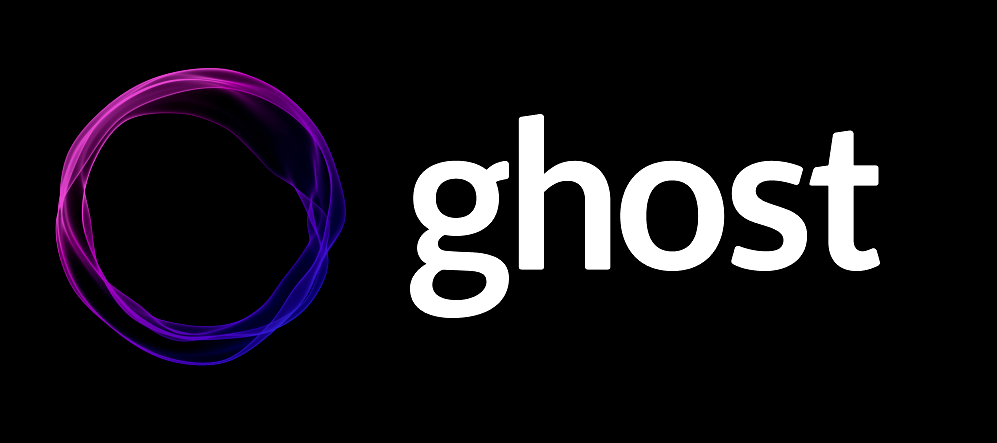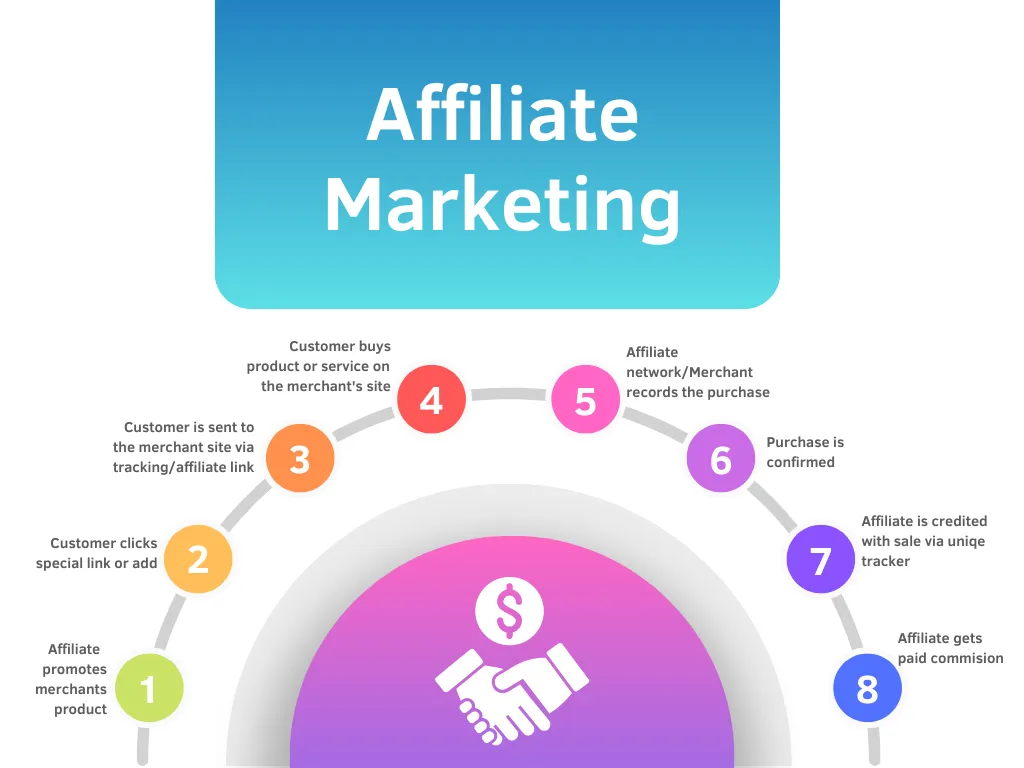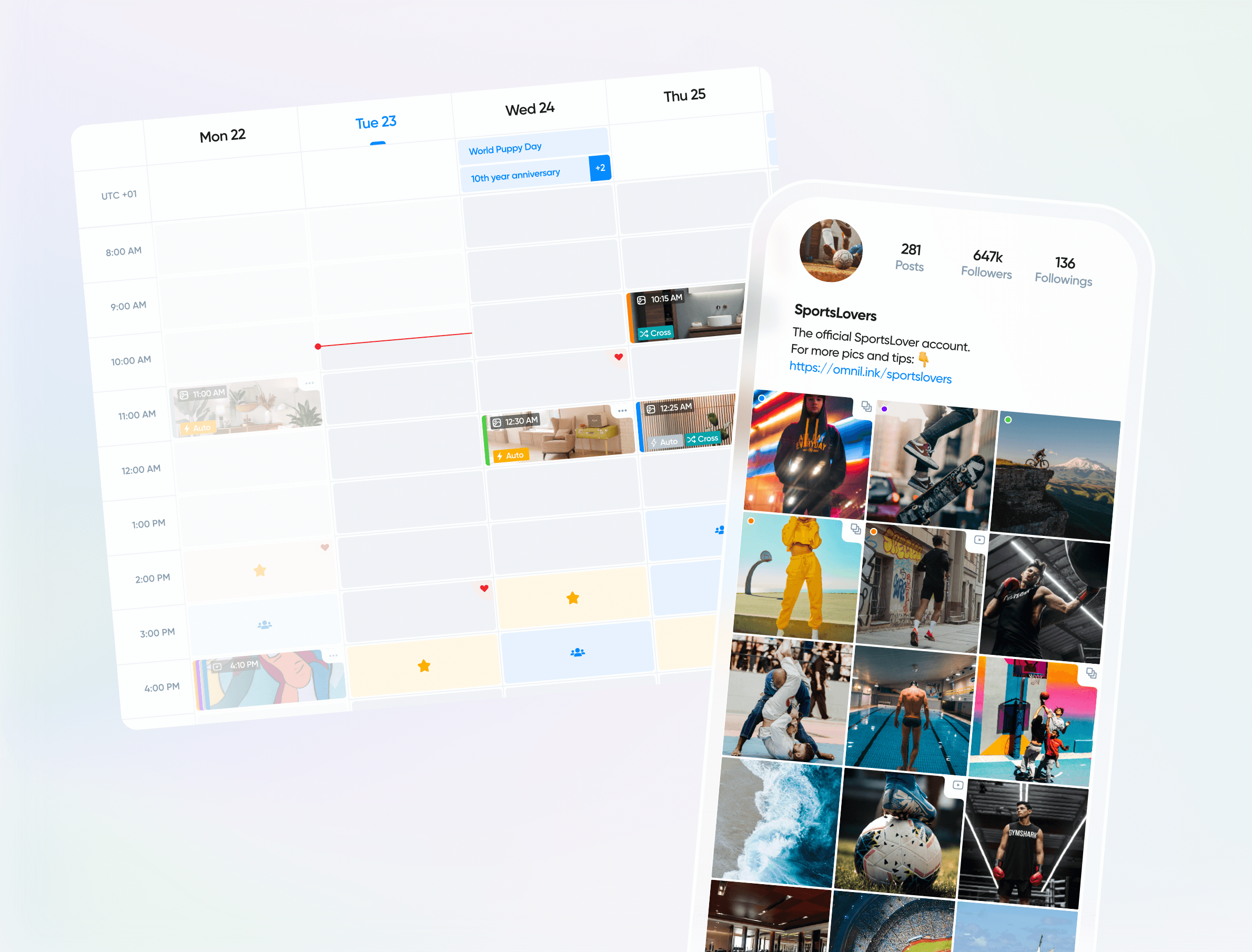1. Introduction
1.1 Definition of Blogging
Blogging is a digital form of expression that allows everyday people, businesses, and organizations to share their thoughts, ideas, and expertise with a global audience. It involves creating and publishing content on a platform, known as a “blog,” where readers can access and engage with the content. Blogging can be a personal hobby, a professional pursuit, or a combination of both. It offers a unique opportunity to connect with like-minded individuals, build an online presence, and even generate income.
1.2 Importance of Blogging

Blogging has become an essential tool for individuals and businesses looking to establish their online presence, share their expertise, and connect with a wider audience. Here are some key reasons why blogging is important:
- Build Authority and Credibility: By consistently sharing valuable and informative content on your blog, you can establish yourself as an authority blog in your niche. Readers will come to trust your insights and expertise, making them more likely to turn to you for advice and recommendations.
- Connect with Your Audience: Blogging allows you to engage with your audience on a personal level. By sharing your experiences, insights, and stories, you can build a loyal community of readers who resonate with your content. Responding to comments and interacting with your audience helps foster a sense of connection and trust.
- Generate Income: Blogging can be a lucrative endeavor if done right. There are various ways to monetize your blog, such as affiliate marketing, sponsored posts, advertisements, and selling products or services. By providing valuable content and building a loyal audience, you can create multiple income streams through your blog.
- Improve SEO: Search engines love fresh and relevant content. By regularly updating your blog with high-quality content, you can improve your website’s search engine rankings, making it easier for potential readers to find you. Blogging also allows you to target specific keywords and phrases, further enhancing your SEO efforts.
- Showcase Your Expertise: Whether you’re a professional, a hobbyist, or an entrepreneur, blogging is an excellent platform to showcase your skills and expertise. By sharing in-depth articles, tutorials, and case studies, you can demonstrate your knowledge and attract opportunities such as speaking engagements, collaborations, and job offers.
2. History of Blogging
Blogging, as we know it today, has evolved significantly since its inception. Its journey from simple online diaries to a powerful digital platform is a testament to the ever-changing nature of the internet.
2.1 Evolution of Blogs
The Dawn of Weblogs
The term “blog” originates from “weblog,” a term coined in the late 1990s. These early weblogs were essentially online diaries where people documented their daily lives, shared personal updates, and expressed their thoughts on various topics.
Rise of Blogging Platforms
As the interest in blogging grew, the need for user-friendly platforms became evident. In the early 2000s, platforms like Blogger and WordPress emerged, making it easier for non-tech-savvy writers to start their blogs without any having coding knowledge.
The Era of Microblogging
With social media platforms like Twitter, microblogging was born. These sites allowed users to share short updates, letting people express themselves in a totally new way.
Multimedia and Vlogging
As internet speeds improved and platforms evolved, bloggers began using multimedia elements into their content. This led to the rise of vlogging (video blogging) on sites like YouTube, where creators shared video content to engage with their audience.
You Might Also Like:
2.2 Milestones in Blogging History
First Known Blog
The first recognized blog, “Links.net,” was created by Justin Hall in 1994. It was a simple webpage where Justin shared links and personal updates.

Birth of Blogger
In 1999, the platform “Blogger” was launched by Pyra Labs, making blogging accessible to a broader audience. It played a big role in popularizing blogging and was later acquired by Google in 2003.

WordPress Enters the Scene
WordPress was launched in 2003, an open-source blogging software that runs millions of blogs today.
The Influence of Social Media
Platforms like Facebook, Twitter, and LinkedIn introduced features that allowed users to share blog-like content, blurring the lines between traditional blogging and social media updates.

The Rise of Professional Blogging
As people realized they can make money, many bloggers transitioned from blogging as a hobby to a full-time job. This led to the emergence of professional bloggers, influencers, and digital entrepreneurs.

Advent of Mobile Blogging
With the widespread use of smartphones and tablets, mobile blogging, or “moblogging,” became popular. Bloggers could now create and publish content on the go, making it easier to share real-time updates and experiences with subscribers.

You Might Also Like:
Growth of Content Marketing
Businesses began to recognize the value of blogging as a content marketing tool. By creating informative and valuable content, companies could attract potential customers, establish brand authority, and drive organic traffic to their websites.

Emergence of Influencer Marketing
As blogs gained popularity, brands started collaborating with influential bloggers for product promotions and endorsements. Influencer marketing became a powerful strategy for brands to reach a targeted audience through authentic and relatable content.

The Rise of Podcasting
Podcasting, or audio blogging, gained traction as a convenient way for audiences to consume content. Many bloggers started hosting podcasts to share their insights, interview guests, and provide a different format for their audience.

Shift to Long-Form Content
As search engines evolved, long-form content became more valuable for SEO. Bloggers began creating in-depth, comprehensive articles that provided valuable information and insights to their readers. This shift helped bloggers rank higher in search results and attract a more engaged audience.

Adoption of Visual Storytelling
With the start of apps like Instagram and Pinterest, visual storytelling became a crucial aspect of blogging. Bloggers started incorporating high-quality images, infographics, and visual elements to enhance their content and engage with their audience.

Focus on Community Building
Bloggers began prioritizing community building and audience engagement. By responding to comments, hosting webinars, and creating exclusive content for subscribers, bloggers fostered a sense of connection and loyalty among their readers.

3. Types of Blogs
Blogging has grown to encompass a vast array of niches and styles, each catering to different audiences and purposes. Whether you’re looking to share personal stories, provide expert advice, or promote a business, there’s a blog type that fits the bill. Let’s delve into the diverse world of blogging and explore the various types available.
3.1 Personal Blogs
Personal blogs are akin to online diaries or journals. Bloggers share their life experiences, personal growth journeys, hobbies, and more. These blogs are often less about reaching a vast audience and more about self-expression, reflection, and connecting with like-minded individuals.
3.2 Business Blogs
Business blogs serve as a platform for companies to communicate with their customers, share industry insights, and showcase their products or services. These blogs aim to establish authority in a specific industry, drive organic traffic, and convert readers into customers.
3.3 Niche Blogs
Niche blogs focus on a specific topic or interest area. Whether it’s gardening, photography, vegan cooking, or digital marketing, niche blogs delve deep into their chosen subject, offering specialized knowledge and expertise. They often attract a dedicated and engaged readership.
3.4 Affiliate Blogs
Affiliate blogs are designed to promote products or services and earn a commission for every sale made through the blog’s referral links. Bloggers review products, create tutorials, or write recommendation lists, guiding readers to make informed purchasing decisions.
3.5 News Blogs
News blogs provide timely updates on current events, trends, and happenings in various sectors. They can be general news outlets or focus on specific industries like tech, entertainment, or sports. These blogs prioritize accuracy, speed, and comprehensive coverage.
3.6 Educational Blogs
Educational blogs aim to teach and inform. They cover academic topics, offer tutorials, or provide resources for learning. From language lessons to coding tutorials, these blogs are a valuable resource for those eager to learn and expand their knowledge.
3.7 Lifestyle Blogs
Lifestyle blogs cover a broad spectrum of topics related to everyday life and interests. They might touch on fashion, travel, home decor, fitness, and more. These blogs often reflect the blogger’s personal tastes, experiences, and lifestyle choices.
3.8 Travel Blogs
Travel blogs are dedicated to sharing experiences, insights, and tips related to travel. These blogs often feature travel itineraries, destination guides, travel hacks, and personal anecdotes from the blogger’s adventures. Travel bloggers may focus on a specific niche within travel, such as solo travel, luxury travel, adventure travel, or budget travel. They often use multimedia elements like photos and videos to showcase the beauty and uniqueness of the destinations they visit. Travel blogs can inspire readers to explore new places, provide valuable information for planning trips, and offer a vicarious travel experience for those who can’t hit the road.
3.9 Food Blogs
Food blogs are all about the culinary world. They can cover a wide range of topics, including recipes, cooking tips, restaurant reviews, food trends, and more. Food bloggers often specialize in a particular cuisine, dietary preference, or cooking style, such as vegan, gluten-free, or slow cooking. They may also focus on specific aspects of food, like baking, grilling, or international cuisines. Food blogs often feature mouth-watering photos and step-by-step instructions to help readers recreate the dishes at home. These blogs are a haven for food enthusiasts, home cooks, and anyone with an appetite for delicious food.
3.10 Fashion Blogs
Fashion blogs are dedicated to the world of fashion, style, and beauty. These blogs often feature outfit ideas, fashion trends, style tips, beauty product reviews, and more. Fashion bloggers may focus on specific areas of fashion, such as street style, high fashion, sustainable fashion, or plus-size fashion. They often collaborate with brands for sponsored posts, product reviews, and giveaways. Fashion blogs are a source of inspiration for readers looking to stay updated on the latest trends, experiment with their style, or find the perfect outfit for any occasion.
3.11 Technology Blogs
Technology blogs cater to readers interested in the latest technological advancements, reviews of gadgets, software tutorials, and discussions about the impact of technology on our daily lives. These blogs often feature reviews of the latest devices, updates on software and apps, and predictions about future tech trends. Bloggers in this niche need to stay updated with the rapid pace of technological changes to provide accurate and timely information.
3.12 Health and Wellness Blogs
These blogs focus on topics related to physical health, mental well-being, fitness routines, healthy eating, and holistic approaches to wellness. Bloggers might share personal journeys, provide tips on staying healthy, or debunk myths related to health and wellness. Given the sensitive nature of health-related topics, it’s crucial for bloggers in this niche to ensure their content is accurate and evidence-based.
3.13 DIY and Craft Blogs
DIY (Do It Yourself) and craft blogs are dedicated to creative endeavors, from home improvement projects to arts and crafts. These blogs often feature step-by-step tutorials, videos, and photos to guide readers through a project. Whether it’s knitting a scarf, upcycling old furniture, or creating handmade jewelry, these blogs inspire creativity and resourcefulness.
4. Blogging Platforms
What Are Blogging Platforms?
Blogging platforms are software or services that provide the infrastructure for creating, publishing, and managing a blog. They serve as the backbone of your blogging journey, offering various tools and features that make it easier to get your blog up and running. These platforms often come with built-in functionalities for design customization, content management, SEO, and social media integration, among others.
Why Are Blogging Platforms Important?
- Ease of Use: For beginners, a blogging platform simplifies the process of setting up a blog. You don’t need to be a tech wizard to start blogging.
- Scalability: As your blog grows, you’ll need a platform that can grow with you. Good blogging platforms offer scalability options, including the ability to handle increased traffic and add more features.
- Customization: Blogging platforms often come with a variety of themes and plugins that allow you to customize the look and functionality of your blog to fit your brand and needs.
- Community Support: Popular platforms have large communities of users and developers, which means you’ll find plenty of tutorials, forums, and third-party add-ons to help you along the way.
- Security: Established blogging platforms usually offer robust security features, including SSL certificates, data backups, and spam protection.
Factors to Consider When Choosing a Blogging Platform
- User-Friendliness: How easy is it to navigate and use the platform?
- Cost: Is it free, or is there a subscription fee? What are the costs of add-ons and premium features?
- Flexibility: Does the platform allow you to add features like forums, online stores, or membership options?
- SEO Capabilities: Does the platform offer built-in SEO tools, or will you need to add them yourself?
- Monetization Options: If you plan to make money from your blog, does the platform support various monetization methods like ads, affiliate marketing, and sponsored posts?
4.1 WordPress

What is WordPress?
WordPress is an open-source content management system (CMS) that initially started as a blogging platform but has evolved to support various types of web content. It’s one of the most popular platforms for blogging, boasting a market share of over 60% among CMS-based websites. WordPress offers a wide range of themes, plugins, and customization options, making it suitable for both beginners and experienced developers.
Pros
- User-Friendly: WordPress is known for its easy-to-use interface, making it accessible to people with little to no coding experience.
- Highly Customizable: With thousands of themes and plugins available, you can easily tailor your blog to fit your brand and functionality needs. MaxiBlocks & Blocksy are highly recommended.
- Strong SEO Capabilities: WordPress has excellent SEO tools and plugins like Yoast SEO that help optimize your blog for search engines.
- Scalability: As your blog grows, WordPress can easily accommodate the increased traffic and additional features.
- Strong Community Support: Being the most popular CMS means there’s a large community of developers and users, offering forums, tutorials, and third-party add-ons.
Cons
- Learning Curve: While WordPress is user-friendly, mastering its more advanced features can take time.
- Cost: The platform itself is free, but hosting, premium themes, and plugins can add up.
- Security Risks: Being popular also makes WordPress a target for hackers, although this can be mitigated with regular updates and security plugins.
- Performance: With so many plugins and customization options, poor choices can slow down your website.
- Compatibility Issues: Not all themes and plugins are compatible with each other, which can sometimes lead to functionality issues.
Conclusion
WordPress is a versatile and robust blogging platform that offers a balance of ease of use and advanced features. Its strong community support and scalability make it a top choice for many bloggers. However, it’s essential to be mindful of potential costs and security risks. Overall, it’s a highly recommended platform for anyone looking to start or grow their blog.
4.2 Blogger

What is Blogger?
Blogger is a free blog-publishing service owned by Google. It offers a quick and straightforward way to create a blog for non-technical users. Blogger has been around since 1999, making it one of the oldest blogging platforms still in existence. It provides a range of basic templates and customization options, and it’s integrated with other Google services like Google Adsense and Google Analytics.
Pros
- Ease of Use: Blogger is extremely user-friendly, making it ideal for beginners with no coding experience.
- Cost-Effective: The platform is free to use, and it even offers free hosting. You can also use a custom domain at no extra cost.
- Google Integration: Being a Google product, Blogger is seamlessly integrated with Google services like Adsense, Analytics, and Google Drive.
- Reliability: Owned by Google, Blogger offers robust reliability and uptime, ensuring your blog is always accessible.
- Basic SEO Tools: Blogger comes with some basic SEO settings, including meta descriptions and search-friendly URLs.
Cons
- Limited Customization: Blogger offers fewer themes and customization options compared to other platforms like WordPress.
- Limited Features: The platform lacks advanced features like plugins, making it less versatile for growing blogs.
- Outdated Interface: The Blogger dashboard and editor can feel somewhat dated compared to more modern platforms.
- Ownership Concerns: Since Google owns Blogger, they have the right to suspend your blog at any time if it violates their terms of service.
- Community Support: Unlike WordPress, Blogger has a smaller community, which means fewer tutorials, themes, and third-party tools.
Conclusion
Blogger is a good starting point for individuals new to blogging or those who want a simple, hassle-free platform. Its ease of use and cost-effectiveness are its main selling points. However, as your blog grows, you may find it lacking in terms of customization, scalability, and advanced features. It’s a suitable platform for small, personal blogs but may not be the best choice for more ambitious blogging projects.
4.3 Medium
What is Medium?
Medium is an online publishing platform launched in 2012 by Twitter co-founder Evan Williams. Unlike traditional blogging platforms, Medium focuses on providing a space for writers, journalists, and experts to share thoughtful and in-depth articles. It has a built-in audience, which makes it easier for your content to get noticed. Medium is known for its clean, distraction-free writing environment and high-quality content.
Pros
- Built-In Audience: Medium has a large and engaged community of readers, making it easier for your content to gain visibility.
- High-Quality Standards: The platform is known for its quality content, which can add credibility to your writing.
- User-Friendly Interface: Medium offers a clean, intuitive, and distraction-free writing environment.
- Monetization Options: Through the Medium Partner Program, writers can earn money based on how many people read and engage with their stories.
- SEO Benefits: Articles published on Medium often rank well on search engines due to the platform’s high domain authority.
Cons
- Limited Customization: Medium offers very limited options for personal branding and customization of your blog.
- Content Ownership: While you retain the rights to your content, Medium’s terms of service grant them a license to distribute your work, which can be a concern for some.
- Paywall: Some of your articles may be placed behind a paywall, limiting the number of people who can read them.
- Limited Control Over Monetization: The Medium Partner Program controls how your content is monetized, which may not align with your own monetization strategies.
- Algorithm Dependency: Your content’s visibility is largely dependent on Medium’s algorithm, which can change without notice.
Conclusion
Medium is an excellent platform for writers who want to focus on the quality of their content and reach a built-in audience without worrying about the technical aspects of blogging. However, it offers limited customization and control over your content and how it’s monetized. It’s best suited for writers who are more focused on content creation rather than building a branded blog.
4.4 Wix
What is Wix?
Wix is a cloud-based web development platform that allows users to create HTML5 websites through drag-and-drop tools. Launched in 2006, Wix has become one of the popular choices for bloggers who prioritize design and user experience. It offers a range of templates, customization options, and even an AI-based design assistant called Wix ADI to help you create a visually appealing blog.
Pros
- Drag-and-Drop Interface: Wix’s intuitive drag-and-drop editor makes it easy for anyone to create a blog, regardless of technical expertise.
- Design Flexibility: With hundreds of templates and customization options, Wix gives you complete control over your blog’s design.
- Built-in SEO Tools: Wix offers a range of built-in SEO features, including meta tags, sitemaps, and SEO patterns, to help improve your blog’s visibility on search engines.
- App Market: Wix has an extensive app market that allows you to add various functionalities to your blog, such as social media feeds, email marketing tools, and analytics.
- Mobile Optimization: Wix websites are automatically optimized for mobile, ensuring a good user experience across devices.
Cons
- Cost: While Wix offers a free version, you’ll likely need to upgrade to a paid plan to remove Wix-branded domain and ads, and to access more advanced features.
- Limited Scalability: As your blog grows, you may find Wix less flexible in terms of adding complex functionalities compared to platforms like WordPress.
- Loading Speed: Due to the heavy use of media and design elements, Wix websites can sometimes suffer from slower loading speeds.
- Limited Export Options: If you ever decide to migrate your blog to another platform, Wix makes it difficult to export your content.
- Learning Curve: The platform’s extensive design options can be overwhelming for beginners, requiring some time to master.
Conclusion
Wix is an excellent choice for bloggers who prioritize design and ease of use. Its drag-and-drop interface and extensive design options make it easy to create a visually appealing blog. However, the platform may not be the best choice for those looking for advanced functionalities and scalability. It’s well-suited for small to medium-sized blogs but may fall short for larger, more complex projects.
4.5 Squarespace
What is Squarespace?
Squarespace is a website-building platform that focuses on design aesthetics and ease of use. Launched in 2004, it has become a popular choice for bloggers, small businesses, and creatives who want a visually appealing website without the hassle of coding. Squarespace offers a range of professionally designed templates and an intuitive drag-and-drop interface, making it easy to create a polished blog.
Pros
- Design-Centric: Squarespace is known for its sleek, professional templates that are optimized for both desktop and mobile viewing.
- User-Friendly: The platform’s drag-and-drop interface is intuitive, allowing users to easily add and arrange elements on their blog.
- Built-in SEO Tools: Squarespace offers a variety of built-in SEO features, such as clean URLs, meta descriptions, and SSL certificates, to help improve your blog’s search engine rankings.
- E-commerce Integration: If you plan to sell products or services through your blog, Squarespace offers robust e-commerce capabilities.
- Customer Support: Squarespace provides 24/7 customer support through live chat and email, ensuring you get help when you need it.
Cons
- Cost: Squarespace does not offer a free plan, and its premium plans can be more expensive than other platforms.
- Limited Customization: While Squarespace offers a range of templates, the customization options are not as extensive as platforms like WordPress.
- Limited Third-Party Integrations: Squarespace has fewer third-party apps and plugins available, which may limit your blog’s functionality.
- Learning Curve: Some users find Squarespace’s interface to be less intuitive than it appears, especially for more complex tasks.
- Limited Export Options: Squarespace allows for some content export, but the process is not as straightforward as it is with other platforms like WordPress.
Conclusion
Squarespace is an excellent choice for bloggers who prioritize design and are willing to invest in a premium experience. Its professionally designed templates and built-in SEO tools make it a strong contender in the blogging platform market. However, it may not be the best fit for those who require extensive customization or third-party integrations. It’s ideal for bloggers who want a visually appealing, straightforward platform and are willing to pay for it.
4.6 Ghost

What is Ghost?
Ghost is an open-source, professional publishing platform aimed at creating simple, elegant blogs and online publications. Launched in 2013 as a Kickstarter project, Ghost has gained popularity for its focus on content creation and SEO. It offers a clean, clutter-free writing experience and is built on modern technology, making it fast and responsive.
Pros
- Simplicity and Focus: Ghost is designed with a focus on content creation, offering a clean, distraction-free writing environment.
- Speed: Built on Node.js, Ghost is known for its fast loading times, which is beneficial for both user experience and SEO.
- Built-in SEO and Social Sharing Features: Ghost comes with built-in SEO settings and social sharing options, reducing the need for additional plugins.
- Developer-Friendly: Being open-source, Ghost allows for extensive customization if you have the technical skills.
- Monetization: Ghost includes built-in features for running a membership site, allowing you to monetize your content directly.
Cons
- Learning Curve: Ghost’s focus on professional publishing and its developer-friendly nature can make it intimidating for beginners.
- Cost: While Ghost itself is free, hosting it requires a paid plan, and the costs can add up.
- Limited Themes and Plugins: Compared to WordPress, Ghost has fewer themes and plugins available.
- Technical Skills Required: To make the most out of Ghost’s customization features, you’ll need some technical skills.
- Limited Support: Being a smaller platform, Ghost doesn’t have as extensive a community or as many tutorials as other platforms like WordPress.
Conclusion
Ghost is an excellent choice for serious bloggers and online publishers who prioritize content creation, speed, and SEO. Its developer-friendly nature allows for extensive customization, but this can be a double-edged sword, as it may intimidate less tech-savvy users. If you’re looking for a fast, focused, and professional blogging platform and are willing to navigate a steeper learning curve, Ghost could be the right fit for you.
4.7 Tumblr

What is Tumblr?
Tumblr is a microblogging and social networking platform that allows users to post multimedia and other content in a short-form blog. Founded in 2007, Tumblr has become a hub for creative individuals, fandoms, and niche communities. It offers a unique blend of blogging and social media features, making it a more informal and interactive platform compared to traditional blogging services.
Pros
- Ease of Use: Tumblr’s user-friendly interface makes it easy for anyone to start a blog, even without technical skills.
- Community Engagement: The platform has a built-in community, making it easier to gain followers and interact with other users.
- Multimedia Support: Tumblr is highly versatile in terms of content, allowing you to post text, images, videos, links, and more.
- Free to Use: Tumblr is free to use, although there are premium themes and features available for purchase.
- Mobile-Friendly: The platform offers a robust mobile app, making it easy to blog on the go.
Cons
- Limited Customization: Tumblr offers fewer customization options compared to more robust platforms like WordPress.
- Limited Monetization: The platform doesn’t offer built-in monetization features, making it less suitable for those looking to make money from their blog.
- Content Ownership: Since Tumblr hosts all the content, they have the right to remove or modify it, which can be a concern for some users.
- Not SEO-Friendly: Tumblr blogs generally do not rank as well on search engines compared to blogs on other platforms.
- Limited Analytics: The platform offers basic analytics, but they are not as comprehensive as those provided by other blogging platforms.
Conclusion
Tumblr is an excellent platform for casual bloggers, creatives, and those looking to join niche communities. Its ease of use and built-in social features make it a unique choice in the blogging world. However, it may not be the best option for those looking for extensive customization, monetization, and ownership of their content. Tumblr is best suited for personal use and less ideal for professional or business blogging.
5. Getting Started with Blogging
Starting a blog is an exciting journey that allows you to share your thoughts, expertise, and creativity with a broader audience. However, the process involves several crucial steps that go beyond just writing posts. From choosing a niche that resonates with you to selecting the right platform and setting up your blog, each step plays a vital role in your blog’s success. In this section, we will delve into the key aspects you need to consider when getting started with blogging, covering topics from choosing a niche to writing your first post.
5.1 Choosing a Niche

Choosing a niche is one of the most critical steps in starting a blog. Your niche is essentially the specific topic or area of interest that your blog will focus on. A well-chosen niche can set the foundation for your blog’s success by attracting a dedicated audience and making it easier to monetize your content.
Why is Choosing a Niche Important?
- Audience Engagement: A focused niche helps you attract a specific audience who are genuinely interested in your content.
- Expertise: Writing about a specific topic allows you to build expertise, making you an authority in that area.
- SEO Benefits: Blogs that focus on a particular niche tend to perform better in search engine rankings.
- Monetization: A well-defined niche can make it easier to target specific advertisers or affiliate programs.
How to Choose a Niche
- Passion and Interest: Choose a topic you are passionate about; this will make the blogging journey enjoyable.
- Market Demand: Research to see if there is a demand for content in your chosen niche.
- Competition: Analyze the competition to identify gaps you can fill or topics you can cover better.
- Monetization Potential: Consider how you can monetize your blog—through ads, sponsored posts, or selling products—and if your niche supports these methods.
Choosing a niche is not just about picking a topic you like; it’s about finding a balance between your interests and the market demand. A well-chosen niche will help you attract a dedicated audience, improve your SEO, and increase your monetization opportunities.
5.2 Selecting a Blogging Platform
Once you’ve chosen your niche, the next crucial step is to select the right blogging platform. The platform you choose will serve as the foundation for your blog, affecting everything from its appearance to its functionality. Therefore, it’s essential to pick a platform that aligns with your needs and goals.
Why is Selecting a Platform Important?
- Ease of Use: The right platform will make it easier for you to manage and update your blog.
- Customization: Different platforms offer varying levels of customization, affecting how much control you have over your blog’s look and feel.
- Scalability: As your blog grows, you’ll need a platform that can grow with you, offering additional features and capabilities.
- Cost: Platforms come with different pricing models, from free options to premium plans, affecting your blog’s overall cost.
Factors to Consider
- User-Friendliness: Choose a platform that is easy to navigate, especially if you’re a beginner.
- SEO Capabilities: Look for platforms that offer robust SEO features to help your blog rank better in search engines.
- Monetization Options: If you plan to monetize your blog, consider platforms that offer built-in monetization features like affiliate marketing or e-commerce.
- Community and Support: A strong community and customer support can be invaluable, especially when you encounter issues or need guidance.
Selecting the right blogging platform is a pivotal decision that will influence your blogging journey in many ways. It’s essential to consider factors like ease of use, customization options, scalability, and cost when making your choice. Take the time to research and perhaps try out a few platforms before making a final decision.
5.3 Picking a Domain Name

Choosing the right domain name is a critical step in establishing your blog’s identity. Your domain name is essentially your blog’s address on the internet, and it’s what readers will use to find you. A well-chosen domain name can enhance your brand, make your blog easy to remember, and contribute to your online credibility.
Why is Picking a Domain Name Important?
- Branding: A unique and memorable domain name helps establish your blog’s brand and sets you apart from the competition.
- Credibility: A professional-looking domain name can lend credibility to your blog, making it more appealing to readers and potential partners.
- SEO Impact: While not as significant as other factors, a keyword-rich domain name can have a positive impact on your blog’s SEO.
- Ease of Sharing: A short and easy-to-remember domain name makes it easier for people to share your blog and recommend it to others.
Factors to Consider
- Relevance: Your domain name should be relevant to your blog’s niche or the topics you’ll be covering.
- Simplicity: Choose a domain name that is short, simple, and easy to spell.
- Uniqueness: Make sure your chosen domain name is unique to avoid any legal issues or confusion with other brands.
- Domain Extension: While .com is the most popular, consider other extensions like .blog, .net, or even niche-specific ones like .travel if they better suit your blog.
Picking the right domain name is more than just finding an available URL; it’s about choosing an identity for your blog that resonates with your audience and enhances your brand. Take your time to brainstorm, consider various options, and even seek feedback before making your final decision.
You Might Also Like:
5.4 Setting Up Web Hosting

After selecting a blogging platform and picking a domain name, the next step is to set up web hosting for your blog. Web hosting is the service that stores your blog’s files and makes them accessible on the internet. The quality of your web hosting service can significantly impact your blog’s performance, including its speed, uptime, and security.
Why is Setting Up Web Hosting Important?
- Performance: A reliable web host ensures that your blog loads quickly, providing a better user experience.
- Uptime: Good web hosting services guarantee high uptime rates, ensuring that your blog is accessible to readers at all times.
- Security: Secure web hosting protects your blog from various online threats, including malware and unauthorized access.
- Scalability: As your blog grows, you’ll need a web host that can handle increased traffic and offer additional resources.
Factors to Consider
- Type of Hosting: There are various types of hosting options, such as shared, VPS, and dedicated hosting. Choose hosting that fits your needs and budget.
- Speed and Performance: Look for hosting services that offer fast load times and high-performance servers.
- Customer Support: Opt for a web host that provides excellent customer support to assist you with any issues or queries.
- Price: Hosting services come at different price points. While it may be tempting to go for the cheapest option, remember that you often get what you pay for.
Setting up web hosting is a crucial step that can influence your blog’s success. It’s essential to choose a reliable, secure, and scalable hosting service that aligns with your blogging goals. Take the time to research different options, read reviews, and consider your long-term needs before making a decision.
We recommend a WordPress setup & Hostinger. They offer a one-click install.
5.5 Designing Your Blog
Once you’ve set up your web hosting, the next step is to design your blog. The design is not just about aesthetics; it also impacts how users interact with your content. A well-designed blog can enhance user experience, encourage engagement, and contribute to your blog’s overall success.
Why is Designing Your Blog Important?
- User Experience: A clean, intuitive design makes it easier for readers to navigate your blog and find the content they’re interested in.
- Branding: The design elements you choose, such as colors and typography, help establish your blog’s brand identity.
- Engagement: A well-designed blog encourages readers to spend more time on your site, increasing the chances of engagement and conversion.
- SEO: Good design practices, like mobile responsiveness and fast load times, can positively impact your blog’s SEO.
Factors to Consider
- Layout: Choose a layout that complements your content and makes it easy for readers to navigate through your blog.
- Color Scheme: Pick a color scheme that aligns with your brand and is pleasing to the eye.
- Typography: Choose readable fonts and ensure that the text is easily scannable to improve readability.
- Mobile Responsiveness: Ensure that your blog design is mobile-friendly, as a significant portion of users may access your blog via mobile devices.
Designing your blog is a critical step that goes beyond choosing pretty colors and graphics. It’s about creating an environment that enhances your content and makes it accessible and engaging for your readers. Take the time to plan your design carefully, keeping in mind both aesthetic and functional aspects.
5.6 Writing Your First Post

After all the technical setup and design work, the moment you’ve been waiting for finally arrives: writing your first blog post. This initial post serves as your introduction to the world of blogging and sets the tone for your blog. It’s an opportunity to engage your audience right from the start and give them a taste of what they can expect from your blog.
Why is Writing Your First Post Important?
- First Impressions: Your first post is often what new visitors will see first, making it crucial for creating a positive first impression.
- Tone Setting: This initial post sets the tone for your blog, giving readers an idea of your writing style, the kind of content you’ll produce, and what they can gain from following your blog.
- Engagement: A well-crafted first post can immediately engage your audience, encouraging them to read more, subscribe, or interact with your blog.
- SEO: While it’s just the beginning, a well-optimized first post can start you off on the right foot in terms of search engine optimization.
Factors to Consider
- Content Relevance: Make sure your first post is relevant to your blog’s niche and offers value to your target audience.
- Quality Over Quantity: Focus on producing a high-quality post rather than a long one. Make every word count.
- Call to Action: Include a call to action encouraging readers to subscribe, comment, or share your post.
- Optimization: Use relevant keywords, meta descriptions, and proper formatting to make your post SEO-friendly.
Writing your first blog post is both an exciting and daunting task. It’s your chance to introduce yourself to your audience and establish your presence in the blogging world. Take your time to plan, research, and craft a post that not only resonates with your audience but also sets a high standard for the posts that will follow.
6. Content Creation
Creating compelling and valuable content is the heart of any successful blog. While the initial setup and design are crucial, it’s the content that keeps your readers coming back for more. In this section, we will explore the various facets of content creation, from finding blog post ideas to scheduling and maintaining consistency. Whether you’re a seasoned writer or a beginner, these insights will help you craft content that resonates with your audience and enhances your blog’s overall impact.
6.1 Finding Blog Post Ideas
Coming up with fresh and engaging blog post ideas is a challenge that every blogger faces. Having a repository of ideas is not just a convenience; it’s a necessity for maintaining a consistent publishing schedule. This section will delve into the importance of finding blog post ideas and offer practical tips on how to do so.
Why Finding Blog Post Ideas is Crucial
- Keeping the Audience Engaged: Regularly publishing new content keeps your audience engaged and coming back for more.
- SEO Benefits: Search engines favor websites that are regularly updated with new content, which can improve your blog’s SEO.
- Staying Relevant: Consistently offering new content helps you stay relevant in your niche and can establish you as an authority.
Sources for Blog Post Ideas
- Industry News and Trends: Stay updated on the latest news in your industry and write posts that offer your unique perspective.
- Reader Questions and Comments: Your audience can be a goldmine for blog post ideas. Pay attention to their questions and comments on your blog or social media channels.
- Competitor Analysis: Look at what topics are being covered by competitors in your niche. Can you offer a different angle or go more in-depth?
- Seasonal and Event-Based Topics: Holidays, seasons, and industry events can offer timely topics to write about.
- Personal Experiences and Stories: Sometimes your own experiences can offer valuable insights and make for compelling blog posts.
Tools and Techniques
- Keyword Research Tools: Use tools like Google Keyword Planner or SEMrush to find keywords that your audience is searching for.
- Social Media Listening: Platforms like Twitter and Reddit can offer a pulse on what topics are trending in your niche.
- Content Calendars: Use a content calendar to plan out your posts in advance, making it easier to manage your ideas.
- Brainstorming Sessions: Regular brainstorming sessions, either alone or with a team, can help generate a list of potential topics.
Validating Your Ideas
- Market Research: Before committing to a topic, do some research to gauge interest. Are people searching for this topic? Is there a gap in existing content?
- A/B Testing Headlines: Use A/B testing to see which headlines attract more clicks and engagement.
- Analyzing Similar Content Performance: Look at how similar topics have performed on your blog or others to gauge potential success.
Finding blog post ideas is an ongoing process that requires a mix of creativity, research, and engagement with your audience. By continuously seeking and validating new ideas, you can keep your content fresh, engage your readers, and improve your blog’s SEO and authority in your niche.
6.2 Writing Engaging Content
Writing engaging content is the cornerstone of a successful blog. While finding the right topics is crucial, the way you present those topics can make or break your blog’s success. This section will explore the elements that make content engaging and offer tips on how to captivate your audience.
Why Writing Engaging Content is Important
- Reader Retention: Engaging content keeps readers on your blog longer, increasing the chances of conversion and return visits.
- Shareability: Content that resonates with readers is more likely to be shared, expanding your blog’s reach.
- SEO Benefits: High-quality, engaging content is favored by search engines and can improve your blog’s SEO.
- Authority: Well-crafted content establishes you as an authority in your niche, building trust with your audience.
Elements of Engaging Content
- Relevance: The content must be relevant to your audience and offer value, solving a problem or answering a question they may have.
- Clarity: Clear, concise writing is easier to read and understand, improving the user experience.
- Tone and Voice: Your writing style, tone, and voice should be consistent and align with your blog’s overall brand.
- Visuals: Incorporating visuals like images, videos, and infographics can break up text and add interest to your posts.
- Storytelling: Using storytelling techniques can make your content more relatable and memorable.
Tips for Writing Engaging Content
- Know Your Audience: Understand who you’re writing for and tailor your content to meet their needs and interests.
- Use Active Voice: Writing in the active voice makes your content more dynamic and easier to read.
- Include Calls to Action: Encourage reader interaction by including clear calls to action, like asking for comments or sharing on social media.
- Edit and Revise: Always proofread and edit your content to eliminate errors and improve readability.
- Test and Measure: Use analytics tools to measure engagement metrics like time spent on page, bounce rate, and social shares to understand what’s working and what needs improvement.
Writing engaging content is a skill that takes time to develop but is crucial for the success of your blog. By focusing on relevance, clarity, and reader engagement, you can create content that not only attracts but also retains your audience. Continuously testing and refining your content can help you understand what resonates most with your readers, allowing you to continually improve and succeed.
6.3 Formatting Your Blog Posts

While the quality of your writing is paramount, the way you format your blog posts also plays a significant role in reader engagement. Proper formatting makes your content easier to read and digest, thereby improving the user experience. This section will delve into the best practices for formatting your blog posts effectively.
Why Formatting is Important
- Readability: Proper formatting breaks up large blocks of text, making it easier for readers to scan and read your content.
- User Experience: Well-formatted posts are more visually appealing, contributing to a better overall user experience.
- SEO Benefits: Good formatting practices, like using headers and bullet points, can improve your blog’s SEO.
- Content Structure: Effective formatting helps structure your content, making it easier for readers to follow your arguments or steps.
Elements of Good Formatting
- Headings and Subheadings: Use headings and subheadings to break up your content into manageable sections.
- Paragraph Length: Keep paragraphs short and to the point to improve readability.
- Bullet Points and Lists: Use bullet points and numbered lists to present information in an easily digestible format.
- Images and Visuals: Incorporate relevant images, infographics, or videos to complement your text and make the post more engaging.
- Whitespace: Utilize whitespace effectively to give your content room to breathe, making it less overwhelming for readers.
Tips for Effective Formatting
- Consistency: Maintain a consistent formatting style throughout your blog to create a cohesive reading experience.
- Mobile Responsiveness: Ensure that your formatting looks good on both desktop and mobile devices.
- Text Formatting: Use text formatting options like bold, italics, and underlining sparingly to emphasize key points without overwhelming the reader.
- Links: Use internal and external links wisely, making sure they are relevant and add value to the content.
- Captions and Alt Text: Use captions for images and alt text for better SEO and accessibility.
Formatting is an often overlooked aspect of blogging that can significantly impact how your audience interacts with your content. By paying attention to elements like headings, paragraph length, and visuals, you can make your posts more readable and engaging. Remember, the goal is not just to attract readers but to keep them on your blog, and effective formatting is a step in that direction.
6.4 Using Visuals in Your Blog

Visual elements are an essential component of modern blogging. They not only make your blog posts more appealing but also help in conveying your message more effectively. This section will explore the importance of using visuals in your blog and offer guidelines on how to do so effectively.
Why Using Visuals is Important
- Reader Engagement: Visuals capture attention and can keep readers engaged for longer periods.
- Information Retention: Studies show that people remember visual information better than text, making your content more memorable.
- SEO Benefits: Properly optimized images and videos can improve your blog’s SEO.
- Shareability: Posts with compelling visuals are more likely to be shared on social media, increasing your blog’s reach.
Types of Visuals to Use
- Images: High-quality, relevant images can enhance your blog posts and make them more appealing.
- Infographics: These are excellent for breaking down complex information into easily digestible visual formats.
- Videos: Videos can offer a more dynamic and interactive experience for your readers.
- Charts and Graphs: These can be useful for presenting data in a clear and understandable manner.
- Screenshots: These are particularly useful for tutorials or guides, showing readers exactly what you’re describing.
Tips for Using Visuals Effectively
- Relevance: Make sure any visual you use is directly relevant to the content of the post.
- Quality: Always use high-resolution images and videos to maintain a professional appearance.
- Optimization: Compress images and use proper alt text for SEO benefits.
- Attribution: Always give proper credit for any visuals you didn’t create yourself.
- Balance: While visuals are important, don’t overdo it. Maintain a good balance between text and visuals.
Using visuals in your blog is not just about making it look good; it’s about enhancing the reader’s experience and making your content more effective. Whether it’s through images, videos, or infographics, visuals can add a new dimension to your blogging, making it more engaging and memorable. However, it’s crucial to use them wisely, ensuring they add value to your content and are optimized for both user experience and SEO.
6.5 Scheduling and Consistency
Consistency is key when it comes to blogging. A regular posting schedule not only helps you build and maintain an audience but also has SEO benefits. This section will discuss the importance of scheduling and maintaining consistency in your blogging efforts.
Why Scheduling and Consistency are Important
- Audience Expectations: Regular posting helps set expectations for your audience, encouraging them to return to your blog.
- SEO Benefits: Consistent posting can signal to search engines that your site is active and regularly updated, which can positively impact your SEO.
- Content Quality: A set schedule allows you time to plan, research, and create high-quality content.
- Accountability: Having a schedule holds you accountable, making it more likely that you’ll stick to your blogging goals.
Strategies for Maintaining Consistency
- Content Calendar: Use a content calendar to plan out your posts in advance, including topics, deadlines, and publishing dates.
- Batching: Consider writing multiple posts at once when you’re in the “writing zone,” and then schedule them to be published at future dates.
- Automation Tools: Utilize tools that allow you to schedule posts to be automatically published at specific times.
- Team Collaboration: If you have a team, use collaboration tools to assign tasks and deadlines, ensuring everyone is on the same page.
Tips for Effective Scheduling
- Know Your Audience: Understanding when your audience is most active can help you choose the best times to publish your posts.
- Be Realistic: Don’t overcommit. Choose a posting frequency that you can realistically maintain over the long term.
- Flexibility: While consistency is important, be flexible enough to adapt your schedule for timely topics or events.
- Review and Adjust: Regularly review your analytics to see how your schedule is affecting engagement and SEO, and adjust as needed.
Maintaining a consistent posting schedule is crucial for the long-term success of your blog. It helps in building a loyal audience, improving your SEO, and ensuring that you produce high-quality content. By using tools and strategies like content calendars and batching, you can make the task of maintaining consistency much more manageable.
7. SEO for Blogging

In the digital landscape, having a blog with high-quality content is only half the battle won. The other half lies in making sure that your blog is easily discoverable by your target audience. This is where Search Engine Optimization (SEO) for blogging comes into play. SEO is a set of strategies and techniques aimed at improving a website’s visibility in search engine results. It’s not just about attracting a high volume of traffic, but about attracting the right kind of traffic that will engage with your content and take desired actions, such as subscribing to a newsletter or making a purchase.
In this section, we will delve into the various facets of SEO that are crucial for bloggers. From keyword research to on-page and off-page SEO, as well as the technical aspects that often go overlooked, we’ll cover it all. We’ll also introduce you to some of the most effective SEO tools that can help you optimize your blog for search engines and, ultimately, your readers.
Whether you’re a blogging novice or a seasoned pro, understanding SEO is essential for your blog’s long-term success. So, let’s get started on making your blog more search-engine friendly.
7.1 Keyword Research
Keyword research is often considered the cornerstone of SEO for blogging. It’s the process of identifying the words and phrases that people are using to search for information online. These keywords are what you’ll want to incorporate into your blog posts to make them more easily discoverable by search engines. But remember, keyword research isn’t just about SEO; it’s also about understanding your audience and the kind of content they are looking for.
Why is Keyword Research Important?
- Audience Insight: Knowing the right keywords gives you valuable insight into what your target audience is interested in.
- Content Relevance: It helps you create content that is not only relevant but also answers the questions your audience is asking.
- Search Visibility: Properly optimized keywords can significantly improve your blog’s visibility in search engine results.
Basic Steps in Keyword Research
- Brainstorm: Start by jotting down topics that are relevant to your blog’s niche. Think about the questions your audience might have.
- Use Keyword Tools: Utilize keyword research tools like Google Keyword Planner, SEMrush, or Ahrefs to find keywords related to your topics. These tools provide data on keyword volume, competition, and more.
- Analyze Competition: Look at the top-ranking pages for your chosen keywords. Understand what they are doing right and identify gaps that you can fill with your content.
- Long-Tail Keywords: Don’t just focus on popular keywords; consider long-tail keywords. These are longer phrases that are less competitive but can attract a more targeted audience.
- Keyword Difficulty: Some keywords are harder to rank for than others. Make sure to balance high-volume keywords with those that have less competition.
- Local Keywords: If your blog targets a local audience, consider using location-based keywords.
- Synonyms and Variations: Search engines are smart enough to understand synonyms. Use different variations of your keywords for a more natural flow in your content.
Implementing Keywords in Your Blog
- Title: The title of your blog post should contain the primary keyword.
- Meta Description: Include the keyword in the meta description to improve click-through rates from search engine results pages.
- Headers and Subheaders: Use keywords in the headings and subheadings to give search engines clues about the content.
- Content: Naturally incorporate keywords throughout your blog post. Avoid keyword stuffing, as it can harm your SEO.
- Alt Text for Images: Use keywords in the alt text for images to improve accessibility and provide context to search engines.
- URL Structure: Incorporate the primary keyword in the URL of your blog post. A clean and descriptive URL is more user-friendly and can contribute to better SEO.
- Internal and External Links: Use your target keywords as anchor text when linking to other relevant blog posts or external resources. However, make sure the anchor text fits naturally within the content.
Monitoring and Updating Keywords
- Performance Tracking: Use tools like Google Analytics to monitor how your keywords are performing in terms of driving traffic and engagement.
- Regular Updates: SEO is a dynamic field, and keyword trends can change. Regularly update your keyword strategy to align with current trends and audience preferences.
- A/B Testing: Experiment with different keywords to see which ones yield better results. Use A/B testing to compare the performance of different keywords in terms of click-through rates, engagement, and conversions.
Keyword research is a critical component of SEO for blogging, but it’s also a tool for understanding your audience and creating content that resonates with them. By following these basic steps and best practices, you’ll be well on your way to optimizing your blog for both search engines and your readers.
Remember, keyword research is not a one-time task but an ongoing process that requires regular monitoring and updating. While this guide provides a comprehensive overview for beginners, we’ll be diving deeper into more advanced keyword research strategies in a dedicated article. Stay tuned!
7.2 On-Page SEO
On-page SEO refers to all the elements and strategies that you can control directly within your website to improve its search engine rankings. Unlike off-page SEO, which involves external factors like backlinks and social signals, on-page SEO focuses on optimizing the content and HTML source code of individual web pages. This is crucial for making your blog more accessible and understandable, both for search engines and your readers.
Why is On-Page SEO Important?
- User Experience: A well-optimized page provides a better user experience, which can lead to higher engagement rates, more time spent on your site, and higher conversion rates.
- Search Engine Rankings: Proper on-page SEO helps search engines understand your content better, which can result in higher rankings for your targeted keywords.
- Crawlability: Effective on-page SEO ensures that search engine crawlers can easily navigate and index your website’s content.
Key Elements of On-Page SEO
- Title Tag: The title tag is one of the most important on-page SEO elements. It should be an accurate and concise description of your page’s content.
- Meta Description: This is a brief summary of your page that appears in search engine results. It should be compelling and include your target keywords.
- Headings: Use headings (H1, H2, H3, etc.) to structure your content. Make sure to include keywords in these headings where relevant.
- Keyword Placement: Place your target keywords in strategic locations like the introduction, conclusion, and throughout the body text.
- Internal Links: Link to other relevant pages on your website to help guide the reader and to improve crawlability for search engines.
- Image Optimization: Use descriptive file names and alt text for images. Compress images to improve page load speed.
- URL Structure: Keep URLs short and descriptive. Include your target keyword in the URL when possible.
- Mobile Responsiveness: Ensure that your website is optimized for mobile devices, as this is a ranking factor for Google.
- Page Speed: Faster loading pages provide a better user experience and are favored by search engines.
Monitoring and Updating On-Page SEO
- SEO Audits: Regularly perform SEO audits to identify areas for improvement.
- Analytics: Use tools like Google Analytics to track key performance indicators like page views, bounce rate, and time spent on page.
- Updates and Refreshes: Keep your content updated and relevant. Refresh old posts with new information and optimize them for current SEO best practices.
On-page SEO is a critical aspect of your overall SEO strategy. By paying attention to these elements and regularly updating them, you can significantly improve your blog’s visibility and ranking in search engine results. As with keyword research, on-page SEO is an ongoing process that requires regular monitoring and updating. Stay tuned for more in-depth discussions on other aspects of SEO.
7.3 Off-Page SEO
Off-page SEO refers to all the activities you undertake outside of your own website to raise the profile of your site in the eyes of search engines and users alike. This is often associated with “link building,” but it goes beyond that to include social media engagement, influencer outreach, and more.
Why is Off-Page SEO Important?
- Authority and Trustworthiness: Quality backlinks from authoritative sites signal to search engines that your content is valuable and trustworthy.
- Brand Awareness: Off-page SEO techniques can help increase your brand’s visibility and recognition.
- Competitive Advantage: A strong Off-Page SEO strategy can give you an edge over competitors who neglect these aspects.
Key Components of Off-Page SEO
- Backlinks: These are links from other websites that point to your site. The quality, quantity, and relevance of these links can significantly impact your SEO.
- Social Media Engagement: Being active on social media platforms can not only drive traffic but also improve your site’s SEO indirectly.
- Guest Blogging: This involves writing articles for other websites in your industry. It’s a great way to reach a new audience and earn quality backlinks.
- Influencer Outreach: Partnering with influencers can help you reach a broader audience and gain credibility, often leading to more backlinks and social shares.
- Local SEO: Listing your business in online directories like Google My Business can improve your visibility for local search queries.
- Forums and Online Communities: Participating in relevant forums and online communities can help you build authority and generate backlinks.
- Content Marketing: Distributing valuable content through various online channels can attract high-quality backlinks and social shares.
- Press Releases: These can be useful for announcing important news and can often result in additional backlinks.
- Reviews and Testimonials: Positive reviews on third-party websites can improve your site’s reputation and encourage more clicks.
- Social Bookmarking: Sites like Reddit and Digg offer another avenue for content promotion and backlink generation.
Monitoring and Updating Your Off-Page SEO Strategy
- Backlink Audits: Regularly use tools like Ahrefs or SEMrush to analyze your backlink profile.
- Competitor Analysis: Keep an eye on what your competitors are doing in terms of Off-Page SEO to identify new opportunities.
- Performance Metrics: Use analytics tools to track key performance indicators like referral traffic, page ranking, and conversion rates.
- Advanced Techniques in Off-Page SEO
- Video Marketing: Platforms like YouTube are becoming increasingly important for SEO. Creating high-quality, informative videos can not only boost your brand but also provide valuable backlinks and social shares.
- Podcast Guesting: Appearing as a guest on popular podcasts in your industry can give you exposure to a broader audience and often results in valuable backlinks to your site.
- Webinars: Hosting or participating in webinars can provide you with an opportunity to showcase your expertise and attract a targeted audience, which can lead to backlinks and social shares.
- E-Books and Whitepapers: Publishing in-depth e-books or whitepapers and distributing them through platforms like Amazon or specialized industry websites can earn you authoritative backlinks.
- User-Generated Content: Encouraging user-generated content, like reviews or guest posts, can not only provide you with free, unique content but also improve user engagement and trust.
- Q&A Platforms: Websites like Quora offer a great opportunity to provide expert answers to questions in your industry, which can result in targeted traffic and backlinks.
- Email Outreach: A well-crafted email outreach campaign can help you build relationships with influencers and industry experts, leading to more high-quality backlinks.
- Affiliate Programs: While primarily a monetization strategy, a well-managed affiliate program can also boost your SEO by generating a large number of backlinks from affiliate websites.
Off-page SEO is a long-term investment that requires ongoing effort. By diversifying your strategies and regularly monitoring their effectiveness, you can significantly improve your website’s search engine ranking and overall online presence.
Also read: Unlocking the Potential of Wikipedia Backlinks
7.4 Technical SEO
Introduction
Technical SEO refers to the process of optimizing the technical aspects of your website to help search engines crawl and index your site more effectively. It involves improving the site’s structure, optimizing the robots.txt file, improving site speed, ensuring mobile-friendliness, and more. Technical SEO is a crucial component of your overall SEO strategy as it lays the foundation for your site’s success in search engine rankings.
Why is Technical SEO Important?
- Site Accessibility: Ensures that search engines can easily access, crawl, and index your site.
- User Experience: Improves the user experience by making your site faster, mobile-friendly, and easier to navigate.
- Site Performance: Optimizes the performance of your site, which is a ranking factor for search engines.
Key Components of Technical SEO
- Site Structure: A well-organized site structure helps search engines understand your site’s content and its importance.
- Robots.txt: This file tells search engines which pages or files they can or can’t request from your site.
- XML Sitemap: A map of your site that search engines use to index your site’s pages.
- Site Speed: The speed at which your site loads is a crucial ranking factor for search engines.
- Mobile-Friendliness: Ensures that your site is optimized for mobile devices.
- Secure and Accessible Website: Having a site that is secure (HTTPS) and accessible is crucial for both users and search engines.
- Duplicate Content: Duplicate content can confuse search engines and harm your site’s SEO. It’s important to identify and fix duplicate content issues.
- Structured Data: This is a way of formatting HTML that uses a specific vocabulary, telling search engines how to interpret the content and how to display it in the SERPs.
Improving Site Structure
- URL Structure: Use short, descriptive, and clean URLs.
- Internal Linking: Use internal links to help search engines understand the content and importance of your site’s pages.
- Breadcrumb Navigation: This helps users and search engines navigate your site more easily.
Optimizing Robots.txt and XML Sitemap
- Robots.txt: Make sure your robots.txt file is correctly configured to allow search engines to access important pages and disallow access to unimportant ones.
- XML Sitemap: Create and submit an XML sitemap to search engines to help them index your site’s pages.
Improving Site Speed
- Optimize Images: Use compressed images and serve them in next-gen formats.
- Minimize Code: Minimize the size of your site’s code by removing unnecessary characters.
- Leverage Browser Caching: This allows your site’s static files to be stored in the browser cache, which can improve site speed.
Ensuring Mobile-Friendliness
- Responsive Design: Use a responsive design that adjusts to the screen size of the device being used.
- Optimize for Mobile: Optimize your site’s content, images, and design for mobile devices.
Securing Your Website
- Use HTTPS: This ensures that the data between your site and its users is encrypted.
- Regularly Update Your Site: Regularly update your site’s plugins, themes, and CMS to ensure it is secure.
Handling Duplicate Content
- Use Canonical Tags: These tell search engines which version of a page is the original and should be indexed.
- 301 Redirects: Use 301 redirects to redirect users and search engines from a duplicate page to the original one.
Implementing Structured Data
- Use Schema Markup: This is a type of structured data that helps search engines understand your site’s content.
- Test Your Implementation: Use tools like Google’s Structured Data Testing Tool to ensure your implementation is correct.
Monitoring and Updating Your Technical SEO Strategy
- Regular Audits: Regularly audit your site to identify and fix technical SEO issues.
- Monitor Site Speed: Regularly monitor your site’s speed to ensure it is optimal.
- Monitor Mobile-Friendliness: Regularly check your site’s mobile-friendliness to ensure it is optimized for mobile devices.
Technical SEO is a crucial component of your overall SEO strategy. It involves optimizing the technical aspects of your site to ensure it is accessible, user-friendly, and optimized for search engines. By regularly monitoring and updating your technical SEO strategy, you can ensure your site performs well in search engine rankings and provides a positive user experience.
7.5 SEO Tools
Introduction
SEO Tools are software or online platforms that help you optimize your website for search engines. They offer a wide range of functionalities, from keyword research and backlink analysis to site audits and performance tracking. Utilizing SEO tools is essential for anyone serious about improving their website’s visibility and ranking in search engine results.
Why are SEO Tools Important?
- Efficiency: Automates various SEO tasks, saving you time and effort.
- Data-Driven Decisions: Provides valuable data and insights that can guide your SEO strategy.
- Performance Tracking: Allows you to monitor your site’s performance and make necessary adjustments.
- Competitive Analysis: Helps you understand your competition and how you can outperform them.
Types of SEO Tools
- Keyword Research Tools: Such as Google Keyword Planner, SEMrush, and Ahrefs.
- Backlink Analysis Tools: Such as Moz, Majestic, and LinkMiner.
- Technical SEO Tools: Such as Screaming Frog, Sitebulb, and Google Search Console.
- On-Page SEO Tools: Such as Yoast SEO, Clearscope, and MarketMuse.
- Local SEO Tools: Such as Google My Business, BrightLocal, and Whitespark.
- Rank Tracking Tools: Such as SERPWatcher, AccuRanker, and Rank Ranger.
- Content Optimization Tools: Such as BuzzSumo, Grammarly, and Hemingway Editor.
- Social Media SEO Tools: Such as Hootsuite, Buffer, and Sprout Social.
Using Keyword Research Tools
- Identify High-Volume Keywords: Use these tools to find keywords that have high search volume.
- Analyze Keyword Difficulty: Understand how difficult it would be to rank for certain keywords.
- Discover Long-Tail Keywords: These are less competitive and can attract a more targeted audience.
Utilizing Backlink Analysis Tools
- Analyze Backlink Profile: Understand the quality and quantity of backlinks pointing to your site.
- Identify Toxic Links: These are links that could potentially harm your site’s SEO.
- Find Link-Building Opportunities: Discover sites that could be potential backlink sources.
Also read: Why Backlink Management is Crucial for Your Website
Leveraging Technical SEO Tools
- Site Audits: Identify technical issues that could be affecting your site’s performance.
- Page Speed Analysis: Understand how quickly your site loads and how to improve it.
- Mobile-Friendliness: Check if your site is optimized for mobile users.
On-Page SEO Tools
- Content Analysis: Analyze your content to ensure it’s optimized for your target keywords.
- Meta Tag Optimization: These tools can help you optimize your meta tags for better visibility.
- Internal Link Analysis: Understand the internal linking structure of your site.
Local SEO Tools
- Local Listing Management: Ensure your business information is consistent across all platforms.
- Local Keyword Tracking: Monitor how your site ranks for local keywords.
- Review Management: Manage and respond to customer reviews.
Monitoring and Updating Your SEO Strategy with Tools
- Performance Tracking: Use tools like Google Analytics to monitor key performance indicators.
- Regular Audits: Use SEO audit tools to regularly check your site for issues.
- Competitive Analysis: Keep an eye on your competitors by using various SEO tools designed for this purpose.
SEO tools are an invaluable resource for anyone involved in SEO. They not only make your life easier but also provide you with the data and insights you need to make informed decisions. Whether you’re a beginner or an experienced SEO professional, investing in the right tools can significantly impact your SEO efforts and results.
8. Monetizing Your Blog
Monetizing your blog is the process of converting your online content and audience into revenue. Whether you’re blogging as a hobby or as a full-time endeavor, understanding how to monetize your efforts can turn your passion for writing and sharing into a profitable venture. This section will explore various methods of monetization, from affiliate marketing and sponsored posts to advertisements and selling products or services. By implementing these strategies, you can create a sustainable income stream while providing valuable content to your readers.
8.1 Affiliate Marketing

What is Affiliate Marketing?
Affiliate marketing is a revenue-sharing model where you promote products or services from other companies on your blog. In return, you earn a commission for each sale or action (like a click or sign-up) that occurs through your unique affiliate link.
How to Implement Affiliate Marketing in Your Blog
- Choose the Right Affiliate Programs: Research and select affiliate programs that are relevant to your blog’s niche.
- Sign Up: Once you’ve chosen an affiliate program, sign up and get your unique affiliate links.
- Create Content: Write blog posts or create other types of content where you can naturally incorporate these affiliate links.
- Promote: Use social media, email marketing, and other channels to promote your affiliate-linked content.
- Track and Optimize: Use analytics to track the performance of your affiliate links and optimize for better results.
Pros of Affiliate Marketing
- Passive Income: Once set up, affiliate marketing can provide a steady income with little ongoing effort.
- Low Risk: There’s typically no cost to join affiliate programs, making it a low-risk monetization strategy.
- Flexibility: You can choose which products or services to promote, giving you control over your content and revenue streams.
Cons of Affiliate Marketing
- Dependency: Your earnings are dependent on the affiliate program and its terms, which can change.
- Limited Control: You have no control over the affiliate products, their quality, or their pricing.
- Potential for Low Engagement: If the products you’re promoting aren’t closely aligned with your audience’s interests, you may see low engagement and conversions.
Additional Considerations
- Disclosure: It’s essential to disclose to your readers that you’re using affiliate links. This builds trust and complies with legal requirements.
- Quality Over Quantity: Focus on promoting products that you genuinely believe in and that are of high quality. This will improve your conversion rates and maintain your audience’s trust.
Affiliate marketing can be a lucrative way to monetize your blog if done correctly. It offers the potential for passive income and gives you the flexibility to choose what you promote. However, it’s crucial to align your affiliate products with your audience’s interests and to be transparent about your affiliations. By doing so, you can build a sustainable and ethical revenue stream for your blog.
8.2 Sponsored Posts
What are Sponsored Posts?
Sponsored posts are articles or content pieces that a company pays you to publish on your blog. These posts are generally promotional in nature and aim to introduce your audience to a product, service, or brand. They can be written by you or provided by the sponsor, depending on the agreement.
How to Implement Sponsored Posts in Your Blog
- Identify Potential Sponsors: Look for companies or brands that align with your blog’s niche and audience.
- Pitch Your Blog: Reach out to potential sponsors with a well-crafted proposal that highlights your blog’s reach, audience demographics, and potential benefits for the sponsor.
- Negotiate Terms: Discuss payment, content guidelines, and other terms before finalizing the agreement.
- Create Content: Write the sponsored post, ensuring it meets the sponsor’s guidelines and naturally fits within your blog’s content.
- Publish and Promote: Once the post is live, share it across your social media channels and through your email newsletter, if applicable.
Pros of Sponsored Posts
- Direct Income: Sponsored posts can provide a significant one-time payment.
- Creative Control: You often have the freedom to create content that fits naturally within your blog’s theme.
- Builds Relationships: Working with sponsors can lead to long-term partnerships and other opportunities.
Cons of Sponsored Posts
- Audience Trust: If the sponsored content doesn’t align well with your blog’s theme or appears too promotional, it could erode trust among your readers.
- Time-Consuming: Creating high-quality sponsored content can be time-intensive.
- Disclosure Requirements: You must disclose that the post is sponsored, which some readers might not like.
Additional Considerations
- Transparency: Always disclose that the post is sponsored to maintain transparency and trust with your audience.
- Quality: Ensure the sponsored post is of high quality and provides value to your readers.
- Legalities: Be aware of any legal requirements in your jurisdiction regarding sponsored content.
Sponsored posts can be a lucrative monetization strategy for bloggers, offering direct income and the opportunity for long-term partnerships. However, it’s crucial to maintain your blog’s integrity by choosing sponsors that align with your niche and by creating high-quality, transparent content. This will ensure that you not only monetize effectively but also maintain the trust and engagement of your audience.
8.3 Advertisements
What are Advertisements?
Advertisements are visual or textual promotions displayed on your blog to generate revenue. They can come in various formats, such as banners, pop-ups, or in-text ads. Advertisements can be sourced directly from advertisers or through ad networks like Google AdSense.

How to Implement Advertisements in Your Blog
- Choose an Ad Network or Direct Advertisers: Decide whether you want to use an ad network like Google AdSense or work directly with advertisers.
- Apply and Get Approved: If using an ad network, you’ll need to apply and get approved, which usually involves meeting certain traffic and content criteria.
- Place Ad Codes: Once approved, you’ll receive ad codes that you can place on your blog where you want the ads to appear.
- Monitor Performance: Use analytics to track how your ads are performing in terms of clicks, impressions, and revenue.
Pros of Advertisements
- Passive Income: Once set up, ads can provide a steady, passive income.
- Ease of Use: Ad networks make it easy to get started with minimal technical know-how.
- Scalability: As your blog grows, so does your ad revenue potential.
Cons of Advertisements
- User Experience: Too many or poorly placed ads can negatively impact the user experience.
- Revenue Fluctuations: Earnings can be inconsistent and are often influenced by factors like traffic and ad placement.
- Lack of Control: With ad networks, you have limited control over the types of ads displayed.
Additional Considerations
- Ad Placement: Be strategic about where you place your ads to maximize visibility without annoying your readers.
- Quality Over Quantity: Don’t overload your blog with ads; focus on providing a good user experience.
- Compliance: Ensure you comply with the terms of service of the ad network you’re using and any applicable laws regarding online advertising.
Advertisements can be an effective way to monetize your blog, offering the potential for passive income and scalability. However, it’s crucial to balance revenue generation with a positive user experience. Overloading your blog with ads or failing to comply with legal requirements can have negative consequences. By being strategic and mindful in your approach, you can successfully monetize your blog through advertisements while maintaining reader trust and engagement.
8.4 Selling Products or Services
Selling products or services involves offering goods, digital products, or services for sale directly on your blog. These could be physical products, digital downloads, online courses, consulting services, etc.

How to Implement Selling Products or Services on Your Blog
- Identify Your Offer: Determine what products or services you can offer that would be valuable to your audience.
- Create Your Offer: Develop your product or service, ensuring it is of high quality and provides value.
- Set Up an Online Store: Use a platform like WooCommerce or Shopify to set up an online store on your blog.
- Promote Your Offer: Use your blog, social media, and email marketing to promote your products or services.
- Fulfill Orders: Ensure you have a system in place for fulfilling orders, whether it’s delivering digital products, shipping physical goods, or scheduling services.
Pros of Selling Products or Services
- Higher Profit Margins: Selling your own products or services often yields higher profit margins than other monetization methods.
- Control: You have complete control over your offerings, pricing, and customer experience.
- Builds Your Brand: Offering your own products or services can help establish your authority and build your brand.
Cons of Selling Products or Services
- Time and Effort: Creating and managing your own products or services can be time-consuming.
- Customer Service: You’ll need to manage customer service, which can be challenging as your business grows.
- Upfront Costs: There may be upfront costs associated with creating your products or setting up your online store.
Additional Considerations
- Pricing: Ensure your pricing is competitive yet reflects the value of your offering.
- Payment Processing: Choose a reliable payment processor that offers a good user experience and low fees.
- Marketing: Have a marketing plan in place to promote your products or services and drive sales.
Selling your own products or services can be a highly profitable way to monetize your blog. It gives you complete control over your offerings and helps establish your authority and brand. However, it also involves significant time and effort, especially in terms of creating your offerings, managing customer service, and promoting your products or services. It’s important to weigh the pros and cons and consider whether this monetization method aligns with your goals and capabilities.
8.5 Donations and Crowdfunding

What are Donations and Crowdfunding?
Donations and crowdfunding involve asking your audience to financially support your blog. While donations are usually one-time or recurring contributions, crowdfunding is often project-specific and may offer rewards or incentives to backers.
How to Implement Donations and Crowdfunding in Your Blog
- Choose a Platform: Decide whether to use a dedicated crowdfunding platform like Kickstarter or a donation service like Patreon.
- Set Up a Campaign: Create a compelling campaign that clearly explains why you need the funds and what they will be used for.
- Promote the Campaign: Use your blog, social media, and email list to promote your campaign and ask for support.
- Offer Incentives: Consider offering rewards or exclusive content to those who contribute.
- Keep Supporters Updated: Regularly update your supporters on the progress of your campaign and how the funds are being used.
Pros of Donations and Crowdfunding
- Community Support: Builds a sense of community and allows your audience to invest in your blog.
- Flexibility: Funds can be used for various purposes, from improving your blog to launching new projects.
- No Need for Advertisers: You’re not reliant on advertisers or affiliate programs, giving you more creative freedom.
Cons of Donations and Crowdfunding
- Uncertain Income: Income from donations and crowdfunding can be unpredictable.
- Time-Consuming: Running a successful campaign requires a significant amount of time and effort.
- Potential for Failure: Not all campaigns reach their funding goals, which can be discouraging.
Additional Considerations
- Transparency: Be transparent about how the funds will be used to build trust with your audience.
- Tax Implications: Be aware that donations and crowdfunding income may be taxable, depending on your jurisdiction.
- Ongoing Engagement: Keep your supporters engaged by regularly updating them on your progress and acknowledging their contributions.
Conclusion
Donations and crowdfunding can be effective ways to monetize your blog, particularly if you have a loyal and engaged audience. They offer the flexibility to use the funds as you see fit and can help build a strong sense of community. However, they also come with challenges, such as the unpredictability of income and the time required to run a successful campaign. If you choose this route, transparency and ongoing engagement with your supporters are key to building trust and ensuring the success of your campaign.
9. Promoting Your Blog
Promoting your blog is an essential step in building a successful online presence. No matter how high-quality and valuable your content is, it won’t reach its full potential unless it’s effectively promoted and shared with a wider audience. This section delves into various strategies and channels for promoting your blog, from leveraging social media and email marketing to guest posting and forming partnerships with influencers and backlink outreach. By implementing these promotional tactics, you can increase your blog’s visibility, attract more readers, and ultimately, achieve your blogging goals.
9.1 Social Media Marketing

What is Social Media Marketing?
Social Media Marketing involves using social media platforms like Facebook, Twitter, Instagram, and LinkedIn to promote your blog and engage with your audience. It’s a powerful tool for increasing your blog’s visibility and driving traffic.
How to Implement Social Media Marketing for Your Blog
- Choose the Right Platforms: Not all social media platforms are suitable for every blog. Choose the ones where your target audience is most active.
- Create a Posting Schedule: Consistency is key in social media marketing. Create a posting schedule and stick to it.
- Share Your Content: Regularly share your blog posts, updates, and other valuable content on your social media channels.
- Engage with Your Audience: Respond to comments, messages, and mentions to build a community around your blog.
- Analyze and Adjust: Use analytics tools to track the performance of your social media efforts and make necessary adjustments.
Pros of Social Media Marketing
- Wide Reach: Social media platforms have large user bases, offering the potential for your blog to reach a wide audience.
- Cost-Effective: Most social media platforms are free to use, making it a cost-effective promotional strategy.
- Builds Community: Social media allows you to engage with your audience and build a community around your blog.
Cons of Social Media Marketing
- Time-Consuming: Managing multiple social media accounts and regularly posting can be time-consuming.
- Algorithm Changes: Social media platforms frequently change their algorithms, which can affect your blog’s visibility.
- Potential for Negative Feedback: Social media opens the door for public criticism or negative feedback.
Additional Considerations
- Quality Over Quantity: Focus on creating high-quality content that provides value to your audience rather than posting frequently with less valuable content.
- Use Visuals: Visual content like images and videos tend to perform better on social media.
- Cross-Promotion: Use your blog to promote your social media channels and vice versa.
Social Media Marketing is an effective way to promote your blog, reach a wider audience, and engage with your readers. However, it requires a strategic approach, consistent effort, and ongoing analysis to be successful. By choosing the right platforms, creating valuable content, and engaging with your audience, you can leverage social media to significantly boost your blog’s visibility and readership.
9.2 Email Marketing

What is Email Marketing?
Email marketing involves sending emails to a list of subscribers to promote your blog, share updates, and engage with your audience. It’s one of the most direct and effective ways to communicate with your readers and drive traffic back to your blog.
How to Implement Email Marketing for Your Blog
- Build Your Email List: Use sign-up forms, pop-ups, or lead magnets to collect email addresses from your blog visitors.
- Choose an Email Marketing Platform: Platforms like Mailchimp, ConvertKit, or SendinBlue offer various tools for managing your email campaigns.
- Create a Content Calendar: Plan out your email content in advance, including newsletters, promotional emails, and updates.
- Design Your Emails: Use templates or custom designs to make your emails visually appealing and aligned with your blog’s branding.
- Analyze and Optimize: Monitor key metrics like open rates, click-through rates, and conversion rates to optimize your email campaigns.
Pros of Email Marketing
- High Engagement: Emails are often more engaging than social media posts, as they land directly in the subscriber’s inbox.
- Targeted Communication: You can segment your email list to send targeted messages to specific groups within your audience.
- Ownership: Unlike social media platforms, you own your email list, giving you more control over your audience.
Cons of Email Marketing
- Time-Intensive: Creating, sending, and analyzing email campaigns can be time-consuming.
- Costs: While some platforms offer free tiers, advanced features usually come at a cost.
- Spam Regulations: You must comply with laws like the CAN-SPAM Act, which sets rules for commercial emails.
Additional Considerations
- Personalization: Use the subscriber’s name and other personalized elements to make your emails more engaging.
- A/B Testing: Experiment with different subject lines, content, and sending times to see what resonates most with your audience.
- Mobile Optimization: Ensure your emails are mobile-friendly, as a significant portion of emails are opened on mobile devices.
Email marketing is a powerful tool for promoting your blog, driving engagement, and building a loyal readership. It offers the advantage of direct, targeted communication and higher engagement rates compared to other promotional channels. However, it requires a well-planned strategy, ongoing effort, and compliance with legal regulations. By focusing on providing value and building a strong relationship with your subscribers, you can leverage email marketing to significantly enhance your blog’s success.
9.3 Guest Posting
What is Guest Posting?
Guest posting involves writing articles or blog posts for other websites in your niche. In return, you usually get a byline and the opportunity to include a link back to your own blog. This strategy helps you tap into a new audience and gain more visibility.
How to Implement Guest Posting for Your Blog
- Identify Target Blogs: Research blogs in your niche that accept guest posts and have a similar or larger audience than yours.
- Pitch Your Ideas: Reach out to the blog owners with a well-crafted pitch, proposing topics that would be valuable to their audience.
- Write Quality Content: Once approved, write a high-quality, original article that adheres to the host blog’s guidelines.
- Promote the Post: After the post is published, share it on your social media channels and through your email list to maximize its reach.
Pros of Guest Posting
- Increased Exposure: Guest posting exposes your content to a new and potentially larger audience.
- Backlinks: The links back to your blog can improve your SEO and drive direct traffic.
- Networking: Guest posting helps you build relationships with other bloggers and influencers in your niche.
Cons of Guest Posting
- Time-Consuming: Writing a quality guest post takes time and effort, which could be spent on your own blog.
- Quality Control: You have less control over how your content is presented on someone else’s blog.
- Rejection: Not all pitches get accepted, which can be discouraging.
Additional Considerations
- Author Bio: Make the most of your author bio to encourage readers to visit your blog or sign up for your email list.
- Follow Up: Engage with comments on your guest post and consider following up with the host blog for future opportunities.
- Niche Relevance: Ensure that the blog you are guest posting on is relevant to your niche to attract quality traffic.
Guest posting is an effective way to promote your blog, build valuable backlinks, and network with other bloggers in your niche. While it can be time-consuming and there’s no guarantee of acceptance, the benefits often outweigh the drawbacks. By carefully selecting where to guest post and creating high-quality, valuable content, you can significantly expand your blog’s reach and credibility.
9.4 Influencer Partnerships

What are Influencer Partnerships?
Influencer partnerships involve collaborating with individuals who have a significant following on social media or a solid online presence in your niche. These partnerships can take various forms, such as sponsored posts, joint webinars, or social media takeovers.
How to Implement Influencer Partnerships for Your Blog
- Identify Potential Influencers: Look for influencers who align with your blog’s niche and values.
- Reach Out: Send a well-crafted proposal outlining the benefits of a partnership for both parties.
- Negotiate Terms: Discuss the scope of the collaboration, compensation, and other details.
- Execute the Partnership: Whether it’s a sponsored post or a joint event, execute the partnership as agreed upon.
- Promote and Analyze: Share the collaborative content across your platforms and analyze its performance to gauge the partnership’s success.
Pros of Influencer Partnerships
- Expanded Reach: Partnering with an influencer can expose your blog to a large, engaged audience.
- Credibility Boost: An endorsement from a respected influencer can significantly boost your blog’s credibility.
- Creative Collaboration: Working with an influencer can bring fresh perspectives and ideas to your content.
Cons of Influencer Partnerships
- Cost: High-profile influencers often require significant compensation for their involvement.
- Risk of Mismatch: If the influencer’s audience doesn’t align well with your blog’s focus, the partnership may not yield the desired results.
- Limited Control: You have less control over the influencer’s content and how they represent your blog.
Additional Considerations
- Due Diligence: Research potential influencers thoroughly to ensure they are a good fit for your blog and have genuine engagement.
- Transparency: Make sure any sponsored content is clearly marked as such to maintain trust with your audience.
- Long-Term Relationships: Aim to build long-term relationships with influencers for ongoing collaborations.
Influencer partnerships offer a unique opportunity to expand your blog’s reach and credibility through collaboration with established figures in your niche. However, these partnerships require careful planning, negotiation, and execution to be successful. By choosing the right influencers, setting clear terms, and focusing on mutually beneficial collaborations, you can leverage influencer partnerships to significantly boost your blog’s visibility and engagement.
9.5 Blog Commenting

Blog commenting involves leaving thoughtful comments on other blogs within your niche. This strategy not only helps you engage with the blog’s author but also exposes your own blog to that blog’s audience. Many blogs allow you to include a link back to your own site when commenting.
How to Implement Blog Commenting for Your Blog
- Find Relevant Blogs: Search for blogs in your niche that produce high-quality content and have an active community.
- Read and Comment: Read the blog posts thoroughly and leave insightful comments that add value to the discussion.
- Include Your Blog Link: Where appropriate and allowed, include a link back to your blog or a relevant post.
- Engage with Other Commenters: Respond to other comments if you have something valuable to add, fostering a sense of community.
Pros of Blog Commenting
- Networking: Blog commenting allows you to build relationships with other bloggers and their audiences.
- Increased Visibility: Your comments and the associated link can attract new visitors to your blog.
- SEO Benefits: Quality comments with backlinks can have a positive impact on your blog’s SEO.
Cons of Blog Commenting
- Time-Consuming: Reading posts and crafting thoughtful comments can take up a considerable amount of time.
- No Guarantee of Traffic: Not all comments will result in increased traffic or engagement.
- Spam Risk: Poorly executed commenting strategies can come off as spammy, damaging your reputation.
Additional Considerations
- Quality Over Quantity: Focus on leaving high-quality comments on a few blogs rather than spreading yourself thin.
- Be Genuine: Authenticity is key. Make sure your comments are genuine and not just a means to get a backlink.
- Follow Up: If someone responds to your comment or asks a question, make sure to follow up to keep the conversation going.
Blog commenting is a simple yet effective way to engage with other bloggers and their audiences, potentially driving traffic back to your own blog. While it can be time-consuming and there’s no guarantee of immediate results, the networking and SEO benefits make it a worthwhile strategy for blog promotion. By focusing on adding real value through your comments, you can build meaningful relationships and gradually increase your blog’s visibility and credibility.
10. Tools and Software for Bloggers
In the ever-evolving landscape of blogging, having the right tools and software at your disposal can make a significant difference in your success. From writing and editing tools that streamline content creation to analytics platforms that offer insights into your blog’s performance, the right toolkit can simplify your workflow and enhance your blogging experience. This section will explore various types of tools and software that are essential for bloggers, helping you choose the ones that best fit your needs and objectives.
10.1 Writing and Editing Tools
Writing and editing tools are software or platforms designed to assist bloggers in creating, editing, and polishing their content. These tools can offer features like grammar checking, style suggestions, and even SEO optimization tips.
How to Choose Writing and Editing Tools for Your Blog
- Identify Your Needs: Determine what you need help with—whether it’s grammar, structure, or SEO—and choose a tool that specializes in that area.
- Test Multiple Options: Many tools offer free trials. Take advantage of this to find the tool that best suits your workflow.
- Check Compatibility: Ensure the tool you choose is compatible with your blogging platform and other software you use.
Popular Writing and Editing Tools

- Rank Math: For WordPress users, offers SEO and readability analysis.
- Grammarly: For grammar and spell checks.
- Hemingway Editor: For improving readability and style.
- Scrivener: For long-form writing and organization.
- Google Docs: For cloud-based writing and easy collaboration.
Pros of Using Writing and Editing Tools
- Quality Improvement: These tools can significantly improve the quality of your writing.
- Efficiency: Automated checks save you time in the editing process.
- SEO Benefits: Some tools offer SEO suggestions, helping your blog rank better in search engines.
Cons of Using Writing and Editing Tools
- Cost: Some of the more advanced features may require a paid subscription.
- Over-Reliance: While these tools are helpful, they shouldn’t replace manual editing and proofreading.
- Learning Curve: Some tools come with a range of features that may take time to learn.
Additional Considerations
- Updates: Make sure the tool you choose is regularly updated to offer the best features and compatibility.
- Community and Support: Check if the tool has an active community or customer support for troubleshooting issues.
Writing and editing tools are invaluable assets for bloggers, offering a range of features to improve the quality and efficiency of your content creation process. By choosing the right tools that align with your needs and integrating them into your workflow, you can elevate the standard of your blog posts while also making the writing and editing process much more streamlined.
10.2 Image Creation Tools
What are Image Creation Tools?
Image creation tools are software or online platforms that help bloggers create visually appealing graphics, illustrations, and images for their blog posts. These tools offer a variety of templates, design elements, and editing features to make the process easier.
How to Choose Image Creation Tools for Your Blog
- Determine Your Needs: Identify the types of images you’ll need most frequently—infographics, featured images, social media graphics, etc.
- Ease of Use: Choose a tool that has an intuitive interface, especially if you’re not a design expert.
- Budget: Some tools are free with limited features, while others require a subscription for advanced capabilities.
Popular Image Creation Tools
- Canva: Offers a wide range of templates and design elements.
- Kittl: Drag and drop for professional-looking art
- Adobe Express: Good for creating social media graphics and short videos.
- Snappa: Easy-to-use tool for quick graphic creation.
- Corel Draw: Professional design toolkit for delivering breathtaking vector illustration
- PicMonkey: Offers photo editing and design features.
Pros of Using Image Creation Tools
- Professional Look: High-quality images can make your blog look more professional.
- Brand Consistency: Many tools offer brand kits to keep your colors, fonts, and logos consistent.
- Time-Saving: Templates and design elements can significantly speed up the image creation process.
Cons of Using Image Creation Tools
- Cost: Premium features and templates often come at a price.
- Overwhelming Choices: The sheer number of templates and features can be overwhelming for beginners.
- File Size: High-resolution images can slow down your blog’s load time if not optimized.
Additional Considerations
- Stock Images: Some tools offer integrated libraries of stock images, which can be a time-saver.
- Collaboration Features: If you work with a team, look for tools that offer collaborative features.
- Mobile Accessibility: Some tools offer mobile apps, allowing you to create images on the go.
Image creation tools are essential for bloggers who want to enhance the visual appeal of their content. These tools offer a range of features to suit different needs, from simple graphics to complex infographics. By selecting the right tool that aligns with your requirements and skill level, you can significantly improve the visual quality of your blog, thereby attracting and retaining more readers.

10.3 Analytics Tools
What are Analytics Tools?
Analytics tools are software platforms that help you track and analyze various metrics related to your blog’s performance. These metrics can include visitor numbers, page views, user behavior, and more. Understanding these analytics is crucial for optimizing your blog and making data-driven decisions.
How to Choose Analytics Tools for Your Blog
- Identify Key Metrics: Determine what metrics are most important for your blog’s success, such as traffic sources, user engagement, or conversion rates.
- User-Friendliness: Opt for a tool that offers an intuitive dashboard and easy-to-understand reports.
- Integration: Ensure the analytics tool can be easily integrated with your blogging platform and other tools you use.
Popular Analytics Tools
- Google Analytics: Comprehensive and widely used, offers a range of advanced features.
- Analytify: Analytics plugin for WordPress
- Jetpack for WordPress: Good for WordPress users, offers basic site stats and performance insights.
- SEMrush: Provides SEO analytics and competitor research.
- Mixpanel: Focuses on user behavior analytics.
- Crazy Egg: Offers heatmaps to understand where users are clicking on your site.
Pros of Using Analytics Tools
- Data-Driven Decisions: Analytics provide the data you need to make informed decisions.
- Performance Insights: Understand what’s working and what needs improvement on your blog.
- Audience Understanding: Gain insights into your audience’s behavior, demographics, and preferences.
Cons of Using Analytics Tools
- Complexity: Some tools have a steep learning curve due to their range of features.
- Cost: Advanced analytics features often come at a premium price.
- Data Overload: Too much data can be overwhelming if you’re not sure what to focus on.
Additional Considerations
- Real-Time Analytics: Some tools offer real-time analytics, allowing you to see the immediate effects of changes or promotions.
- Customization: Look for tools that allow you to create custom reports and dashboards.
- Compliance: Ensure the tool you choose is compliant with privacy laws like GDPR if applicable.
Analytics tools are indispensable for any serious blogger. They provide the insights you need to understand your audience, optimize your content, and grow your blog effectively. While the range of features and data can be overwhelming, focusing on key metrics and integrating analytics into your regular workflow can offer invaluable benefits. By choosing the right analytics tool for your needs, you can take a data-driven approach to blogging success.
10.4 Social Media Management Tools
Social Media Management Tools are platforms or software designed to help you manage multiple social media accounts from a single dashboard. These tools can assist in scheduling posts, tracking social media engagement, and analyzing results, making it easier to maintain a consistent social media presence for your blog.
How to Choose Social Media Management Tools for Your Blog
- Platform Support: Make sure the tool supports all the social media platforms you use.
- Ease of Use: The tool should have an intuitive interface for scheduling posts and analyzing data.
- Budget: Some tools offer free plans with limited features, while others require a monthly or yearly subscription.
Popular Social Media Management Tools
- Iconosquare: Connect all your social media accounts, sit back, and let the magic happen.
- Metricool: One-stop shop for social media and online ad management
- Pallyy: Pallyy offers feature-rich social media management and scheduling without the price tag.
- Buffer: Known for its user-friendly interface and post-scheduling features.
- TweetDeck: Ideal for managing multiple Twitter accounts.
- Later: Great for Instagram scheduling and visual planning.
- Sprout Social: Offers in-depth analytics and customer relationship management features.
- Hootsuite: Allows you to manage multiple platforms and offers detailed analytics.
Pros of Using Social Media Management Tools
- Time-Saving: Schedule posts in advance to save time and maintain consistency.
- Efficiency: Manage all your social media accounts from one place.
- Analytics: Most tools offer analytics to measure the effectiveness of your social media strategy.
Cons of Using Social Media Management Tools
- Cost: Premium features like advanced analytics and additional social accounts often come at a cost.
- Learning Curve: Some tools offer a range of features that may take time to fully understand.
- Over-Automation: Relying too much on automation can make your social media presence feel less personal.
Additional Considerations
- Collaboration: If you have a team, look for tools that offer collaborative features.
- Mobile Access: Some tools offer mobile apps for managing your social media on the go.
- Customer Support: Check if the tool offers customer support for troubleshooting and assistance.
Social Media Management Tools are essential for bloggers who want to maintain a consistent and effective social media presence. These tools not only save time but also provide valuable insights into your social media performance. By choosing a tool that aligns with your needs and budget, you can streamline your social media management and focus more on creating quality content for your blog.
10.5 Email Marketing Tools
What are Email Marketing Tools?
Email Marketing Tools are software platforms designed to help you create, send, and manage email campaigns. These tools offer features like email templates, automation, subscriber segmentation, and analytics, making it easier to maintain an engaged email list for your blog.
How to Choose Email Marketing Tools for Your Blog
- Features: Identify the features you need, such as automation, A/B testing, or advanced analytics.
- Ease of Use: Choose a tool with an intuitive interface to simplify the process of creating and sending emails.
- Pricing: Many tools offer free plans with limited features, while premium plans offer more advanced capabilities.
Also see: 7 Best Marketing Automation Platforms
Popular Email Marketing Tools
- GetResponse: Provides a range of features including automation, landing pages, and webinars.
- AWeber: Offers a free plan and includes features like autoresponders and basic analytics.
- Systeme.io: An all-in-one marketing platform with email marketing features.
- Mailmodo: Known for interactive AMP emails.
- Moosend: Offers advanced automation features and a free plan.
- EngageBay: Provides a suite of marketing services including email marketing.
- Omnisend: Specializes in e-commerce email marketing.
- Sender: Known for its simplicity and free plan.
- ActiveCampaign: Offers customer experience automation, combining email marketing, automation, sales automation, and CRM.
- ConvertKit: Designed for creators and bloggers, offers advanced segmentation.
- Brevo: Offers email marketing services along with additional features like SMS marketing.
- Mailchimp: Known for its user-friendly interface and free plan.
Pros of Using Email Marketing Tools
- Audience Engagement: Keep your audience engaged with regular updates and valuable content.
- Automation: Automate repetitive tasks like welcome emails, follow-ups, and campaigns.
- Personalization: Use segmentation and personalization features to target specific groups within your audience.
Cons of Using Email Marketing Tools
- Cost: Advanced features and more extensive subscriber lists often require a paid plan.
- Complexity: Some tools offer a wide range of features that can be overwhelming for beginners.
- Compliance: Make sure to follow email regulations like CAN-SPAM and GDPR.
Additional Considerations
- Integration: Check if the tool integrates with your blogging platform and other tools you use.
- Analytics: Use the tool’s analytics features to track open rates, click-through rates, and conversions.
- Templates: Look for a tool that offers a variety of email templates to make your campaigns look professional.
Email marketing is a powerful way to connect with your audience and drive engagement for your blog. The right email marketing tool can simplify this process, offering automation, analytics, and other features to make your campaigns more effective. You can build a more engaged and loyal audience for your blog by choosing a tool that fits your needs and budget.
11. Blogging Tips and Best Practices
Navigating the world of blogging can be both exciting and challenging. While creating content and connecting with your audience is rewarding, it’s also crucial to follow specific guidelines and best practices to ensure your blog’s success. This section aims to provide you with actionable tips and proven strategies that can elevate your blogging game. From building a loyal audience to avoiding common pitfalls, these insights will serve as your roadmap to blogging excellence.
Building and Engaging Your Audience
One of the most crucial aspects of successful blogging is building a loyal and engaged audience. Consistency is key here; regular posting schedules and high-quality content can go a long way in retaining your readers. Utilize social media platforms to interact with your audience, answer their questions, and keep them updated on your latest posts.
Staying Updated on Trends
The blogging landscape is ever-changing, and staying updated on the latest trends is essential. Subscribe to industry newsletters, follow influential bloggers, and participate in webinars or online courses to keep your knowledge current. This will not only improve your blog but also position you as an authority in your niche.
Engaging with Readers
Engagement doesn’t end once a blog post is published. Make sure to respond to comments on your blog and social media channels. This interaction can provide valuable insights into what your audience is interested in, which can inform future content.
Avoiding Common Blogging Mistakes
- Inconsistency: Sporadic posting can confuse your audience and affect your blog’s SEO.
- Ignoring SEO: Not optimizing your blog for search engines can significantly limit its reach.
- Poor Quality Content: Content that is poorly researched or written will not engage readers and can harm your reputation.
- Ignoring Analytics: Not tracking your blog’s performance means you’re missing out on insights that could help you improve.
Additional Tips
- Content Calendar: Use a content calendar to plan your posts and ensure consistency.
- Quality Over Quantity: It’s better to publish one well-researched, high-quality post than multiple mediocre ones.
- Networking: Don’t underestimate the power of networking with other bloggers and industry experts. Guest posting and collaborations can significantly boost your blog’s visibility.
- Backup: Always backup your blog content to prevent any loss due to technical issues.
Blogging is a rewarding but challenging endeavor that requires a multi-faceted approach. By focusing on building and engaging your audience, staying updated on industry trends, actively interacting with your readers, and avoiding common mistakes, you can set your blog up for long-term success. These best practices are not just tips but essential strategies that every blogger should incorporate into their blogging journey.
12. Final Thoughts
If you’ve made it this far, you’re already ahead of the game. You’ve got the tools, the tips, and the know-how to start your own blog and make it a smashing success. So, what are you waiting for?
Taking that first step can be daunting. But remember, every successful blogger started precisely where you are now: at the beginning. And the most important thing is just that—to begin. Your unique voice has a place in the world, and your insights, stories, and knowledge could be the inspiration or solution someone out there is looking for.
Don’t get bogged down by the details or the fear of not being “good enough.” You’ll learn as you go, and honestly, the blogging community is one of the most supportive groups you’ll ever find. Plus, you’ve got this handy guide to refer back to whenever you need a little nudge or guidance.
So go ahead, take the plunge. Pick a topic you’re passionate about, set up that blog, and hit “Publish” on your first post. Trust us; the journey is as rewarding as the destination, filled with opportunities to learn, grow, and connect with like-minded individuals.
Happy blogging, and here’s to the incredible journey that awaits you! 🌟










